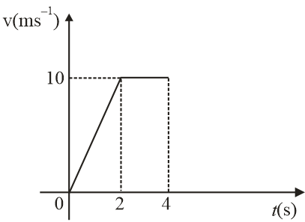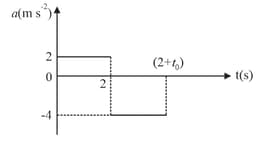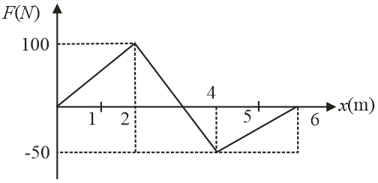B M Sharma Solutions for Chapter: Basic Mathematics, Exercise 70: CONCEPT APPLICATION EXERCISE 2.7
B M Sharma Physics Solutions for Exercise - B M Sharma Solutions for Chapter: Basic Mathematics, Exercise 70: CONCEPT APPLICATION EXERCISE 2.7
Attempt the practice questions on Chapter 2: Basic Mathematics, Exercise 70: CONCEPT APPLICATION EXERCISE 2.7 with hints and solutions to strengthen your understanding. PHYSICS For Joint Entrance Examination JEE (Advanced) Mechanics I solutions are prepared by Experienced Embibe Experts.
Questions from B M Sharma Solutions for Chapter: Basic Mathematics, Exercise 70: CONCEPT APPLICATION EXERCISE 2.7 with Hints & Solutions
The speed of a car increases uniformly from zero to in and then remains constant (figure).

(a) Find the distance travelled by the car in the first .
(b) Find the distance travelled by the car in the next .
(c) Find the total distance travelled in .
A car accelerates from rest with for and then decelerates constantly with for second to come to rest. The graph for the motion is shown in figure.

(a) Find the maximum speed attained by the car.
(b) Find the value of .
A stationary particle of mass is acted upon by variable force. The variation of force with respect to displacement is plotted in the figure below.
(a) Calculate the velocity acquired by the particle after getting displaced through .
(b) What is the maximum speed attained by the particle and at what time is it attained?

The displacement of a body at any time after starting is given by . Find the time when the velocity of the body will be .
A particle moves along a straight line such that its displacement at any time is given by . Find the velocity when the acceleration is .
The displacement of a particle moving in one dimension under the action of a constant force is related to time by the equation , where is in and is in . Find the displacement of the particle when its velocity is zero.
The acceleration of a motorcycle is given by , where and . The motorcycle is at rest at the origin at time .
(a) Find its position and velocity as functions of time.
(b) Calculate the maximum velocity it attains.
The acceleration of a particle varies with time seconds according to the relation . Find velocity and position as functions of time. It is given that the particle starts from origin at with velocity .
